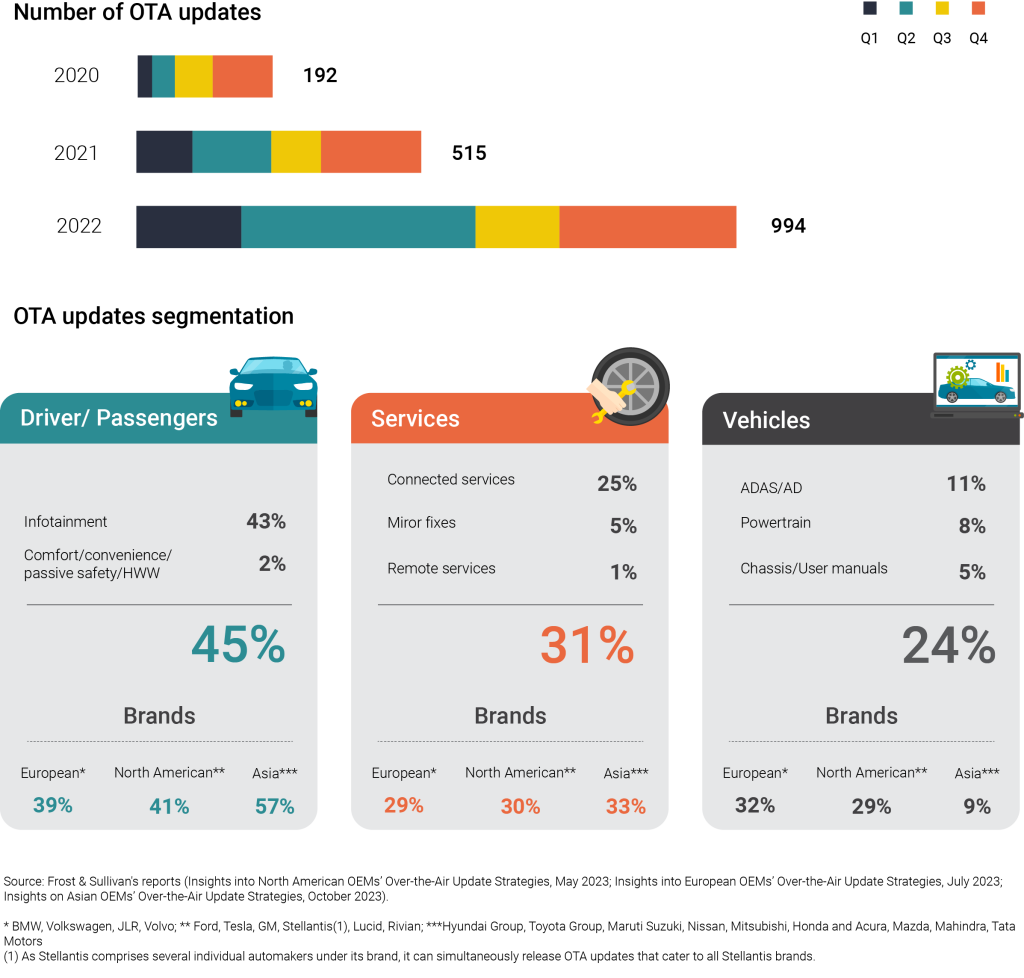
Accelerating ahead: How OEMs can deliver next-generation automotive technical assistance

By Nicola Zorz, Global Solution Leader, Diagnostic and Repair Enhancement
Innovations and new digital realities are transforming the landscape of automotive customer support, reshaping how Original Equipment Manufacturers (OEMs) provide assistance. This article aims to illuminate the complexities and triumphs of this digital revolution by examining how OEMs can leverage newly emerging technologies or adapt their current strategies to form better solutions. This in-depth exploration of a technology-first approach reveals a future where precision and expertise converge, promising not just efficiency but profoundly transformative automotive customer support.
Navigating the digital maze: Challenges and triumphs
Transitioning to digital customer support presents new challenges as intricate as the solutions they demand. One of the primary hurdles faced by OEMs is the seamless integration of advanced technologies into their existing infrastructures. This integration demands agility and foresight. By embracing meticulous planning and innovative strategies, OEMs can bridge the gap between legacy systems and new solutions, ensuring a seamless transition into the digital age.
The Over-The-Air (OTA) revolution: A real-world scenario
At the core of this transformation lies Over-The-Air (OTA) technology, a paradigm shift in automotive customer support. OTA technology empowers OEMs to remotely detect and anticipate issues in vehicles, significantly reducing the need for physical visits to service centers. Imagine this: you’re on a road trip, miles away from the nearest service station, and your vehicle’s diagnostic system detects a potential issue. In the traditional scenario, this could mean a stressful interruption and a lengthy visit to the nearest service station, possibly ruining your trip. However, with OTA technology, the OEM can remotely diagnose the problem, download necessary updates, and ensure your journey continues uninterrupted. These types of predictive solutions will help to alleviate concerns and redefine customer expectations.
From reactive to proactive: Evolving challenges and opportunities
As vehicles grow increasingly complex, Technical Help Desks (THDs) face the daunting task of not just keeping pace but staying ahead. The digitalization of services, though time-consuming and intricate, presents immense opportunities. By enabling dealers to remain autonomous through the use of predictive tools, THDs can transform service experiences from resolving incidents to preventing them altogether. This transition, however, requires navigating the intertwined paths of OEM IT strategies and THD service innovation.
The rise of Over-the-air (OTA) updates
Research from Frost & Sullivan reveals a growing adoption of OTA updates predicts that they will become a standard feature in future vehicles.

A personalized touch
As vehicles transform into Big Data powerhouses, managing vast amounts of information becomes a challenge. This is where artificial intelligence (AI), machine learning (ML), and the internet of things (IoT) come into play. By harnessing the potential of these technologies to sift through vast amounts of data, OEMs can begin to identify patterns and anomalies that may have been impossible to see before.
While using the internet of things, an AI system can analyze driving habits, identify potential issues based on the pattern of the data extracted and predict potential issues that may impact the vehicle in the future. Consequently, the OEM can offer tailored recommendations, ensuring your vehicle continues to operate at peak efficiency. These personalized touches, made possible through advanced analytics, will go a long way to enhance customer satisfaction and loyalty.

The importance of POVs: Proof of value
It is paramount that mobility companies begin to cater their solutions to and understand the unique needs of each OEM. The best way of achieving this is through a strategic integration process that begins with a meticulously crafted proof of value (POV). A POV serves as a window into the future, showcasing the transformative power of innovative solutions and allowing the OEM to see how certain technologies can benefit them before taking the financial risk of a full-scale implementation.
For example, an OEM, skeptical about the efficacy of digital solutions, may review the proof of value of a similar implementation with another large-scale company. After reviewing the data, they will be able to see how a similar program could offer a significant reduction in service-related downtimes and a spike in customer satisfaction. This tangible proof can be used to convince the OEM of the potential, leading to a seamless integration of new technology services into their operations. This ability to see the results of a new approach, without taking the financial risk, is a clear win for OEMs.
Enhancing customer experience: The human element
Amidst the whirlwind of new technological advancements, human interaction remains crucial in the realm of automotive customer support. Companies must recognize this fundamental truth and integrate a human-centric approach into their digital solutions. The importance of empathy is paramount, as well as understanding and communication in resolving customer issues. While algorithms and data analyses may drive predictive solutions, it is the empathetic human touch that fosters trust and loyalty.
If a customer receives a service engine prompt, a technician will run the diagnostics and begin to service the vehicle. If they experience problems fixing the issue, they will contact a THD for further support. An agent on the other side can direct them through the process with step-by-step instructions. This process is paramount in delivering excellent customer service as the THD support agent not only understands the concerns of the technician, but also that the vehicle must be fixed and returned to the customer in a timely manner. This fusion of technology and compassionate human interaction elevates the customer experience, ensuring that technological advancements are not devoid of empathy.
A glimpse into the future of automotive customer support
As the automotive industry hurtles toward a time dominated by automation and digitalization, MSX technology stands as a beacon of innovation. Our approach paints a vivid picture of a future where vehicles not only navigate roads but also seamlessly traverse the complexities of the digital landscape. The integration of OTA technology, coupled with the analytical power of AI and ML, heralds an era where customer support is not just efficient but also anticipatory, predictive, and profoundly personalized.
A paradigm shift in automotive customer support
This article has offered just a glimpse into the challenges and triumphs within the dynamic landscape of automotive customer support. It showcases a world where technology and expertise converge to redefine industry standards. As we continue to move forward, it is evident that companies will continue to shape the automotive landscape, ensuring that vehicles not only drive forward but also lead the way in delivering unparalleled customer experiences.
With every digital advancement, the drive toward excellence accelerates, promising a future where customer satisfaction knows no bounds. As we bid farewell to the era of traditional support models, innovative solutions and powerful new technologies pave the way for a new dawn, where automotive customer support is a seamless blend of innovation, empathy, and unparalleled expertise.
Latest insights
AI Images provided by www.Freepik.com

